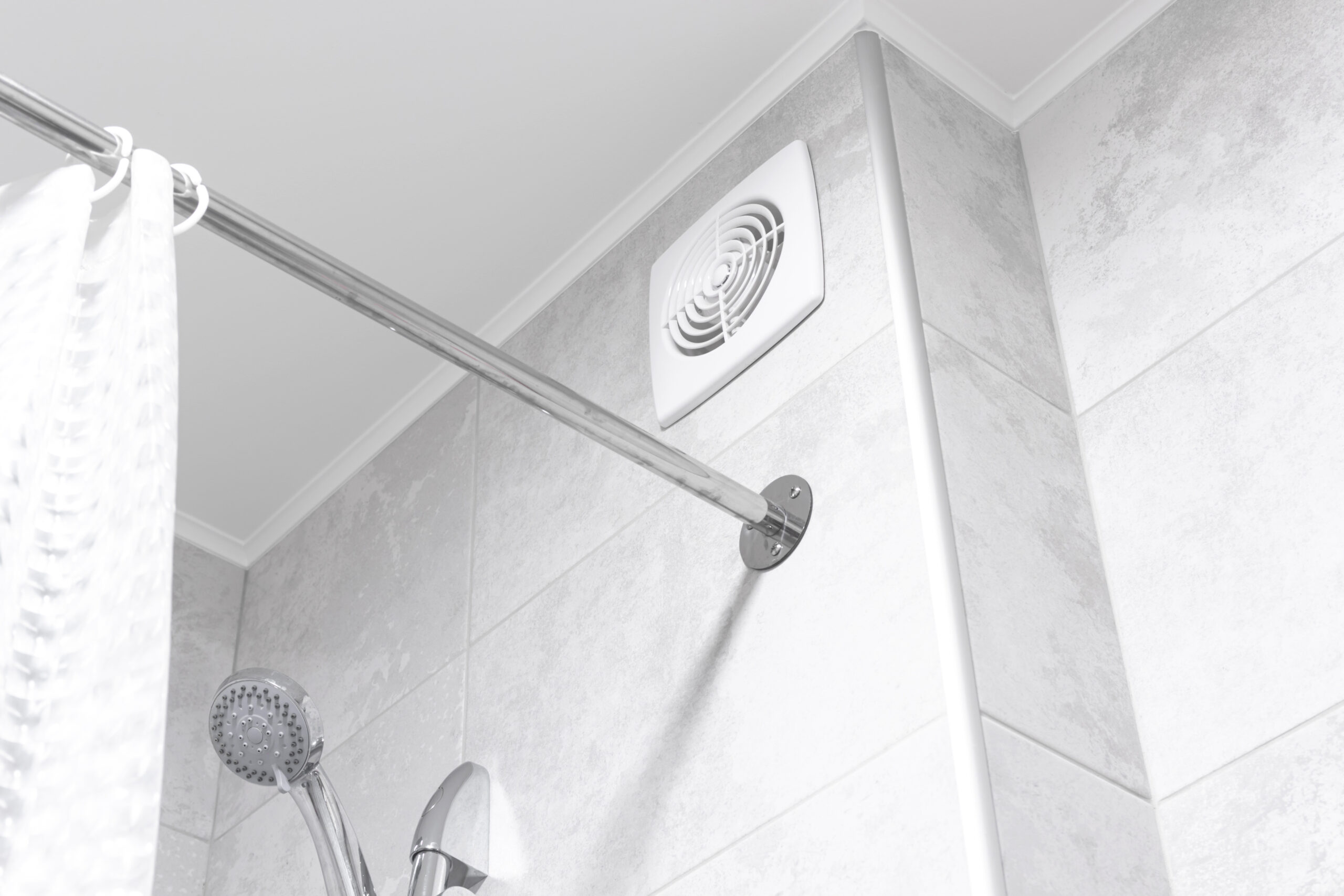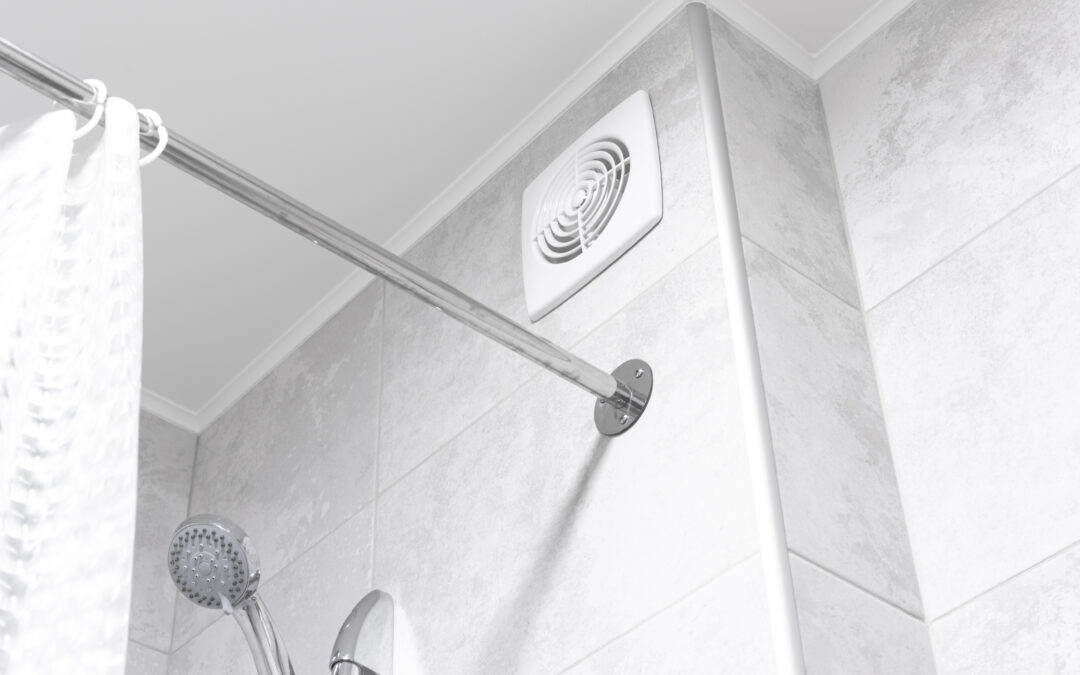
Bathroom ventilation not only creates a comfortable environment but also plays a crucial role in preventing the growth of black mould. With its ability to thrive in damp conditions, black mould poses some health risks and can damage your bathroom surfaces. But we’re here to help.
On this page, we’ll show you ways to ventilate your bathroom and keep black mould at bay. Following these cleaning measures, you can maintain a clean, healthy, and black mould-free bathroom.
Get a FREE Brochure
Simply complete our form to see a full range of bathing solutions & their key features. It takes no time at all!
- What are the benefits of bathroom ventilation?
- 10 ways to improve bathroom ventilation
- How to get rid of black mould
- What is black mould?
What are the benefits of bathroom ventilation?
Proper ventilation in your bathroom offers several benefits:
Moisture control
Bathroom ventilation helps to remove excess moisture from the bathroom, preventing the growth of mould, mildew, and bacteria. It also helps to prevent water damage to surfaces and fixtures in the bathroom.
When you have a shower, wet room or bath, moisture accumulates in the air, which can lead to condensation on mirrors, windows, and walls. Using a bathroom extractor fan, among other methods, can help to reduce this moisture.
Odour elimination
With the accumulation of moisture and bacteria, bathrooms can develop unpleasant odours. Effective bathroom ventilation helps to remove these odours by expelling the stale air and bringing in fresh air from outside, improving the overall air quality in the bathroom and making it a safer, more pleasant environment.
Improve air quality
Ventilation systems in bathrooms help to remove airborne pollutants, such as volatile organic compounds (VOCs), chemicals, and gases. These pollutants can be released from cleaning products, personal care products, and other sources. By providing a constant exchange of fresh air, proper bathroom ventilation helps to maintain a healthier and safer breathing environment, which can be particularly beneficial for elderly people or those with breathing issues.
Preventing surface damage
Excess moisture in the bathroom can cause damage to surfaces and materials over time, leading to peeling paint, warped cabinets, deteriorated grout, and even structural damage. By reducing moisture levels through bathroom ventilation, you can prevent these issues and prolong the lifespan of your bathroom fixtures and finishes.
Added comfort
Adequate bathroom ventilation helps to maintain a comfortable temperature and humidity level in the bathroom, preventing the build-up of excessive heat and humidity, creating a more enjoyable and relaxing environment for users.
10 ways to improve bathroom ventilation
These are the best ways to improve your bathroom ventilation and prevent black mould:
1. Install a bathroom extractor fan
A bathroom extractor fan can make a big difference in a windowless bathroom by drawing in warm air and excess moisture, effectively addressing odours, preventing rust, and eliminating the nuisance of foggy mirrors.
One drawback of bathroom extractor fans is that you’ll typically need professional installation unless you have DIY experience. While it may not be the most affordable home improvement, it’s cost-effective in the long run as it prevents future damage and mould issues. A well-maintained bathroom extractor fan can last over ten years, and with regular cleaning and upkeep, its lifespan can be extended even further.
2. Use a fresh air intake ventilation system
If installing a bathroom extractor fan isn’t feasible, then we recommend a fresh air intake vent. A new air intake system improves air circulation, humidity control and introduces fresh, natural ventilation from the outdoors.
These systems are more expensive than standard extractor fans and require professional installation, but they’re increasingly popular among homeowners who prioritise long-term prevention of humid air-related problems in their bathrooms.
3. Try a dehumidifier
A dehumidifier effectively ventilates the bathroom by removing humid air and replacing it with dry air. It’s a cost-effective option for bathrooms prone to moisture build-up, ensuring that excess humidity is kept at bay.
We recommend you choose a dehumidifier appropriate for the size of your bathroom because larger rooms will need more powerful units. Keep in mind that the more you use the dehumidifier, the higher the operating costs. While it may not be practical for larger families or households, dehumidifiers work best in smaller, personal bathrooms.
4. Install a ceiling fan
Adding a ceiling fan to your bathroom can be a viable option for improving bathroom ventilation, particularly in windowless bathrooms. Ceiling fans enhance air circulation and help reduce humidity build-up. It’s important to note that ceiling fans need electricity to function and should be installed by a qualified electrician.
5. Consider an air conditioner
Air conditioners not only regulate indoor air quality throughout the house but can also effectively circulate air and control excess moisture in the bathroom. They release cool air into the bathroom while expelling warm air.
While air conditioners can significantly improve bathroom ventilation, professional installation may be required depending on the type of unit, which can increase costs. However, the long lifespan and their ability to effectively combat bathroom humidity make them a worthwhile investment.
6. Keep a gap beneath your bathroom door
Ensuring that the door to your bathroom isn’t tightly sealed against the frame allows for better airflow and promotes a well-ventilated space, reducing excessive moisture. We recommend a gap of at least half a centimetre, although any amount of space is better than none.
7. Avoid closing the door
To let humid air escape, we recommend leaving your bathroom door open whenever possible. While this may not always be practical, leaving the door open allows hot air to escape and circulate, preventing it from being trapped in one area and reducing the likelihood of humidity and water droplets. Also, if you take care to avoid water splashing onto the floor, leaving the shower door open can help minimise humidity levels.
8. Wipe down the walls and surfaces
Regularly wiping down surfaces in your bathroom is an often overlooked but essential step in preventing damage caused by humidity. After showering, make it a habit to wipe down the bath, shower, shower curtain, and other areas where water droplets accumulate. This proactive measure in bathroom ventilation helps minimise the impact of hot water and saves you time and money in the long run.
9. Don’t dry towels in the bathroom
Wet bath towels can retain a significant amount of water and leaving them in the bathroom can contribute to excess moisture and musty odours. To reduce humidity, maintain a fresh bathroom, and promote better air quality, you should try drying your towels in a different part of your home.
10. Use a portable fan after bathing or showering
Introducing a portable fan to your bathroom, especially after a steamy bath, can help remove excess moisture from the air. If you’re on a budget and can’t afford more expensive options like a bathroom extractor fan or air conditioning unit, a portable fan can be a practical alternative.
How to get rid of black mould
We’ve shown you how to ventilate your bathroom, but you may also need to combat black mould. To effectively get rid of black mould in your bathroom, we recommend you follow these steps:
Take safety precautions
Before you begin, ensure proper ventilation by opening windows and using fans. Also, wear protective gloves, goggles, and a mask to avoid direct contact with the mould spores.
Identify and address the source of moisture
Black mould thrives in damp environments, so it’s important to identify and fix any water leaks, plumbing issues, or excessive humidity problems in your bathroom. Repairing these sources of moisture will help prevent mould regrowth.
Scrub with a mould-killing solution
Prepare a solution by mixing equal parts of water and either bleach, vinegar, or hydrogen peroxide. Use a scrub brush or sponge to thoroughly clean the affected areas, applying the solution and scrubbing away the mould. Rinse the surface with clean water afterwards.
Use specialised mould cleaners
Alternatively, you can use commercially available mould cleaners that are specifically created to kill and remove mould. Follow the instructions provided by the brand and apply the cleaner as directed.
Remove and replace porous materials if necessary
If the mould has penetrated porous materials like drywall, ceiling tiles, or carpeting, it may be necessary to remove and replace these items/surfaces with non-porous material to completely eliminate the mould, a great example being easy-to-clean tiles. However, always ask a professional if extensive mould growth is present or if you’re unsure about handling the removal process yourself.
Dry the area thoroughly
After cleaning, ensure your bathroom is properly dried to prevent moisture accumulation. Use dehumidifiers or fans to promote air circulation and quick drying.
Prevent future mould growth
Take preventive measures to avoid black mould reappearing in your bathroom. This can be done by regularly cleaning and drying the bathroom, fixing any plumbing issues promptly, and maintaining proper bathroom ventilation by using extractor fans or opening windows during and after showers.
What is black mould?
Black mould is a type of fungus that appears as a dark green or black substance. While there are various types of black mould, most people refer to Stachybotrys chartarum (S. chartarum). It thrives and spreads on materials rich in cellulose, such as paper products, wooden items, and drywall. Cellulose is a fibre found in plants, including fruits and vegetables, forming part of their cell walls.
To grow and spread, black mould needs warm temperatures and moisture, commonly emerging in damp or water-damaged areas within homes, like basements, showers, and windows. It’s important to note that, for the majority of individuals, black mould doesn’t pose severe health risks or result in fatality. However, black mould can make you ill if you have mould allergies.
If your immune system is weakened or compromised, which can happen due to immunodeficiency disorders or medications suppressing immune function, black mould exposure can also result in a fungal infection (mycosis) within your airways or other parts of your body. So, it’s important to consult your doctor if you have these issues, and you see black mould appearing in your bathroom.






